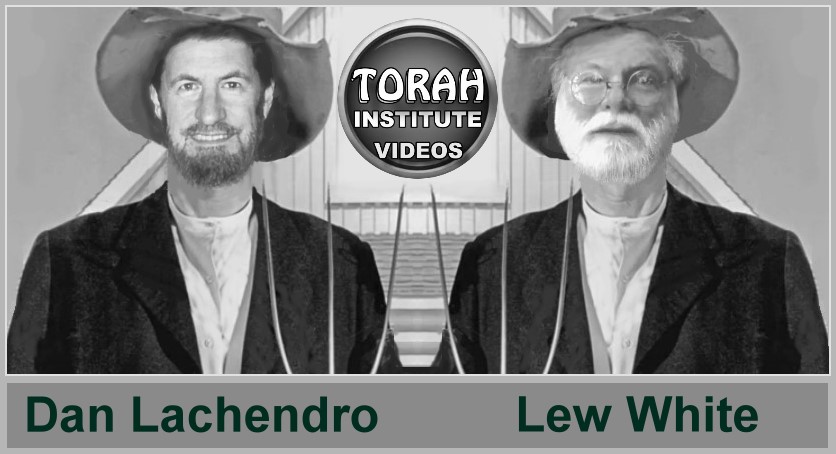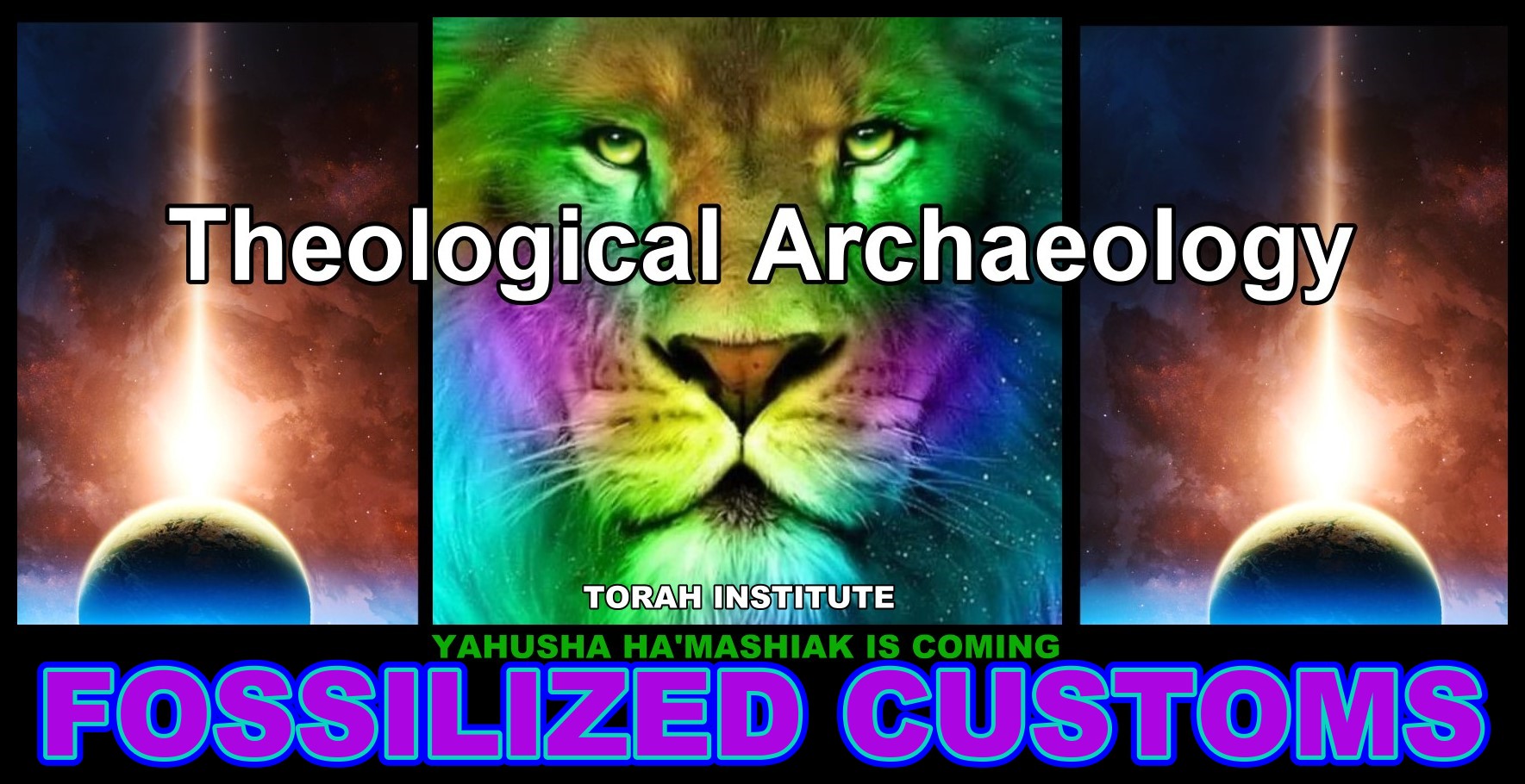
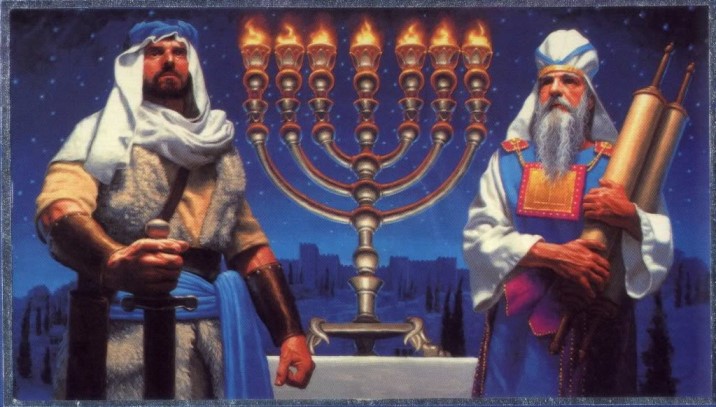
HANUKKAH
means
dedication
HEBREW ROOTS RESEARCH BY LEW WHITE
KANUKAH (often seens as Chanukah) is a civil commemoration of the defeat of Greek invaders against Torah
observance. What's not to like?
Back in the days of the Maccabees, the Greeks had erected an image of Zeus.
An invasion / occupation is going on even
today; there's a Shiva shrine on the Temple Mount, and
the idol of Zeus stands in the lobby of the UN building.
Hanukkah commemorates important historical events directly concerning the
foreign occupation of the land prior to the coming of Yahusha ha'Mashiak.
We can stay ignorant of this part of history, or we can choose to keep this
deliverance in mind as part of our identity with the past.
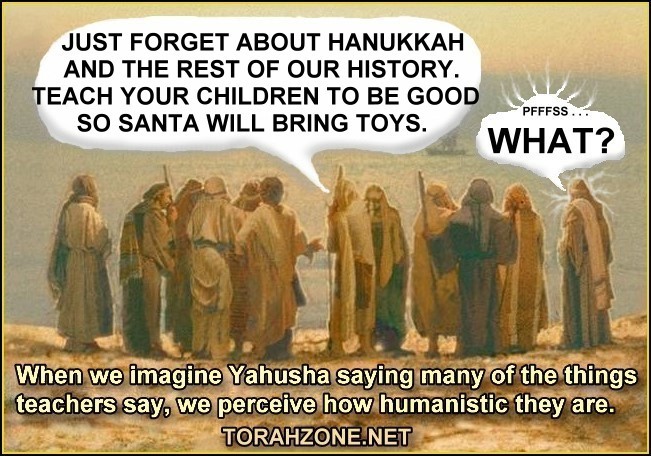
We are not obliged to annually observe the feast of Dedication, but
Kanukah (aka
Hanukkah) is mentioned in Scripture.
If anyone teaches that Hanukkah is
required
to observe as anything beyond the civil commemoration it is, they are just as
out-of-bounds as requiring a magic towel for prayer, or requiring a minimum of
10 men to meet together. All human traditions are not evil, and often we see
linkages where there are no linkages.
Thanksgiving (in the US) is not related to Pilgrims or Sukkoth, and Hanukkah is
not related to the winter solstice. 1000 years from now (if Yahusha tarries), men
will no doubt be reporting the first Thanksgiving in North America was
celebrated with Pilgrims and native Americans, but we know it is based solely on
a proclamation of Abe Lincoln calling for a national day of thanksgiving for
ending the Civil War.
If the Jewish Encyclopedia makes Hanukkah to seem like a
solstice party, it's not because that's what it actually is about.
People are making-up so many things here on the Internet, it's mind-boggling to
say the least.
Hanukkah is not an appointment proclaimed by Yahuah, but it certainly was
an important deliverance we remember outside of the
redemptive feasts. If one wants to teach their children the whole of our history,
it is hard to ignore the time an image of Zeus was placed inside the Temple.
It was an important military achievement for Yahuah's people, but not required for us to annually
perform any sort of resting from work as with the other appointments.
The overthrowing of Antiochus Epiphanes (Zeus manifest) ties-in with
prophecies in the book of Danial.
Scripture mentions evil men in prophecy. Prophecies may have multiple
fulfillments, and it's hard to dismiss the similarities with Antiochus Epiphanes
and Constantine. Antiochus "Epiphanes" was a name that literally referred to
Zeus "manifest," and this ruler placed an image of Zeus in the Temple just as was
prophesied by Gabrial (to Danial). Constantine fancied himself to be Apollo, as
we see depicted on coins he minted. Google the Constantine Creed, and compare it
with the actions of Antiochus Epiphanes.
All the solar deities were vicariously Nimrod, only in babbled names.
Santa is Nimrod, aka Molok, which is why we see this character mulling around in
the sky mythology at the time of the ancient winter solstice, the birthday of
the Sun. We have been eating wormwood, the changing of the Living Words of
Yahuah. Until we repent, He will not let us call on His Name. Even the false
name men call on (Jesus) is wormwood. It is less than 500 years old, and before
that came directly from the Latin Vulgate's form, IESV. Wormwood is being
exposed for the restoration of all things to take place.
We don't establish festivals for every prophetic fulfillment, but we do
observe the redemptive ones that concern the message (besorah) to all mankind.
QUESTION:
Hello brother Lew, Do you celebrate Chanukah?
Dear sister,
Hanukkah, meaning
dedication,
is an opportunity for each of our families to remember, yet again, another
deliverance
from those who are stronger.
It involves the Greek "horn" or power.
Babel,
Persia,
Greece,
and
Rome
are four major prophetic entities/horns described in Daniel’s writings. If
we ignore Hanukkah, we neglect the details of one of the most significant
periods in Yisharal’s history. The book of
Maccabees
records this tragic period in great detail.
The Torah, and those who observed it, was the primary target of the enemy at
that time, and during the reign of Antiochus IV Epiphanes (Mithridates) the
nation of Yisharal was under compulsion to adopt all facets of the Greek culture.
“Hellenization” was to replace the Torah-observant culture, and the same level
of ferocity and hatred seen in Nazism was exerted on the nation of Yisharal,
because the same “spirit” (the dragon) was in the ruler, Mithridates/Antiochus
IV.
People were hewn-down en-mass, and entire families were slowly tortured to
death. The Torah was out-lawed, along with all outward observances such as
circumcision and the eating of clean foods. During this period, prior to
the death of Mithridates/Antiochus IV in 164 BCE, the Yahudim were forced to
wear the
hat
of Hermes, the Greek deity of wisdom. This is promoted by modern
sophistry
today, as graduates are obliged to put on this same hat. The tradition of
the
“kipa”
or skullcap worn by those who attend synagogue is directly traced to this Greek
hat, also worn by Jesuits and the popes. It is the “hat of a scholar”,
honoring the Greek deity of wisdom, Hermes.
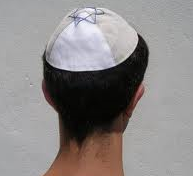

HOW ABOUT A LITTLE HERMENEUTIC ACTION HERE?
Hermes
–
deity of the word, or wisdom, is the equivalent to the Egyptian deity
Thoth. Thought to be the son of
Zeus
and
Maia
(A common Earth Mother term), the name is contained in the term
“hermeneutics,” which is the scholarly word for the principles of
interpretation and explanation, which is kind of what is going on right now . .
. . . kipa (or kippah) is a Hebrew word meaning dome.
We could be neglectful if we fail to teach our children of this great
deliverance, so that is why our families should remember it each year.
SHOULD WE TEACH ABOUT 164
BCE?
Teaching our children about historical events is always important, or we will
keep repeating the same mistakes. The civil remembrance of Kanukah is not a
commanded observance of Yahuah. His Shabaths are our bond to Him, and to one
another. We can relate to things such as Gideon's obedience to Yahuah in the
battle with the Midianites, or many other historical events, or ignore them
because we feel there is no reason to remember them; some choose to teach their
generation about what happened in 164 BCE, and they remember that miraculous
deliverance using symbols. The symbols used to remind us of the tragedy of the
Greek occupation such as the dreidel and Hanukkiah menorah, help us to relate by
drawing on the events of the past in order to inspire a later time. This is
called “archaizing.” As in the days of Gideon, a great miracle happened in 164
BCE also. Remembering our history is fine. What is wrong is to exchange gifts -
this syncretistic behavior began in the late 1800's in Cincinnati, Ohio.
It is not a
commanded observance of Yahuah, but if we are to be identified
closely with all that the nation of Yisharal has endured, we can bond with our
heritage through many historical events. The symbols, the dreidel and
Hanukkiah menorah, help us to relate by
drawing on
ancient tradition in order to inspire a later time.
This is called
“archaizing.”
Many object to the teaching that a cruse of oil was found that enabled the
menorah to burn for
eight days,
setting the number of days we celebrate the time the Temple was cleansed and
dedicated to Yahuah. This points to one of the miracles, which if it
really happened, we should not argue about. It cannot be proven, but yet
it has imprinted itself on the festival. What miracle has occurred that
has not had its detractors? The fact that the nation of Yisharal was not
Hellenized is the greatest miracle; and what happened to Antiochus IV was
certainly another one. Our grandchildren learn a little more about it each
year as they become older and can bear more of the details.
The dreidel, a spinning top, reflects on Hanukkah from
outside
and
inside the land today, with the four Hebrew letters that stand for
“great miracle happened there”, and “great miracle happened here.”
NUN, GIMEL, HEY, SHIN,
OR
NUN, GIMEL, HEY, PEY
stand for Hebrew words:
Nes Gadol Hayah Sham
- "a great miracle happened there”
Nes Gadol Hayah Poh
-
"a great miracle happened here"
The dreidels we see everywhere usually use the Aramith
script as shown:
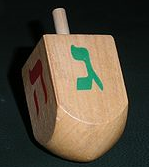
The festival of the “Dedication” (Hanukkah) is mentioned at Yahuchanon 10:22,
when Yahusha was confronted directly by the Yahudim to answer if He was the
Mashiak. They were looking for the Mashiak to come, and expected a
deliverer from their overlords. We know now that He delivered us from our
transgressions, but they failed to recognize the time of their visitation.
So, once again, the symbol of the dreidel comes to mind. The four sides
are also a traditional reminder of the
four exiles
of Yahuah's people by the gentiles/nations: Babel, Persia, Greece, and Rome.
We are not looking back to the four times the
Shekinah
departed, but to the time the
Shekinah
will return. Our Deliverer lives.
Psa 24:6-10:
“This is the generation of those who seek Him; Yaʽaqob, who seek Your face.
Selah!
Lift up your heads, O you gates! And be lifted up, you everlasting doors!
And let the Sovereign of esteem come in.
Who is this Sovereign of esteem? Yahuah strong and mighty, Yahuah
mighty in battle.
Lift up your heads, O you gates! Even lift up, you everlasting doors!
And let the Sovereign of esteem come in.
Who is this Sovereign of esteem? Yahuah of armies, He is the Sovereign of
esteem! Selah!”
Yes, I
do
celebrate the dedication of the Temple, and I believe Yahusha did as well.
Modern-day curmudgeons (people with warped, malevolent hearts) often look for
whatever they can find that seems negative in everything, as we have just seen
over the celebration of Thanksgiving here in the United States. Hanukkah
helps us embrace our heritage more fully, and so I encourage others to learn
about it.

Our resistance to obey is caused by wormwood, the alteration of Yahuah's
Words. We need to receive a love for the Truth, otherwise we will be sent a
strong delusion to believe the lie.
Yahuah's Words have not changed.
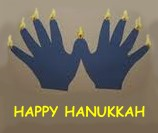
A brother commented that there is no similarity with the
kippah
and the hat of Hermes, so this is my short reply to that
statement:
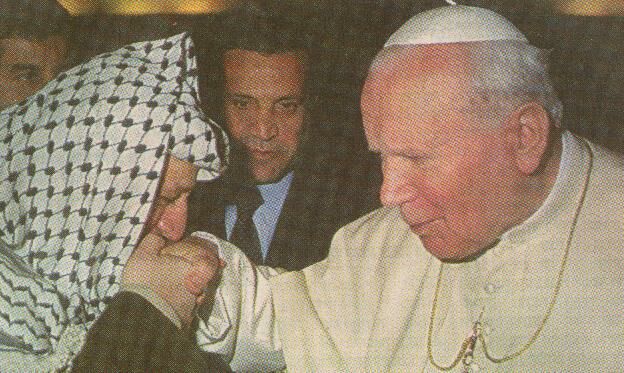
WHAT IS THAT LITTLE HAT ON THE POPE?
Dear brother,
About the Greek hat, there is more than a passing similarity, I feel, but then
we can agree to disagree on that.
Here is a record of the Greek hat
impose on the Yahudim by Antiochus IV:
2 Maccabees 4:12: “He quickly established a gymnasium at the very
foot of the acropolis, where he induced the noblest young men to wear the Greek
hat.”
The “Greek hat” was the same hat seen worn by the pope and cardinals, and it has
more than a casual similarity to the ones worn by others, such as the Chasidim.
This is what is known as "syncretism".
The kohenim wore linen hats, but only during their obligated times of
service.
They did not wear hats all the time, trying to show piety or humility as seen
today. Neither piety nor humility would have been the purpose of wearing
the hat; their purpose was the same as one who wears hair-controlling
devices in the food or medical professions today.
There is no prescribed hat-wearing of any kind for any native-born or engrafted
foreigner who follows the Torah, nor can it be added by human tradition.
Tsitsith are prescribed, but no hats. Neither are they forbidden, unless they
come from the worship of another, which would make them an abomination.
One only needs to look at photos of people wearing a kipa (kippah, meaning
“dome”), and photos of the pope, cardinals, and images of Hermes. Considering
the lack of any domed hats in Torah being prescribed, and the entrance of this
custom from the imposition of the Greek culture as seen in 2 Maccabees 4:12,
there is little doubt about the origin of this practice. Even if the resemblance
is only a weird coincidence, at best it is only an outward sign of membership,
which is just “straw” in the eyes of Yahuah.
Another interesting item that shows "syncretism" has
occurred: Catholics adopted "prayer beads" from the far east, or Buddhist
traditions, and in turn passed these on the the Arabs via Islam.
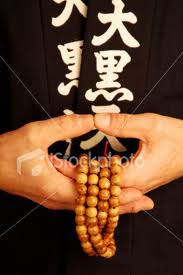
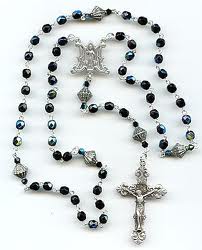
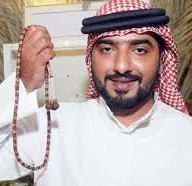
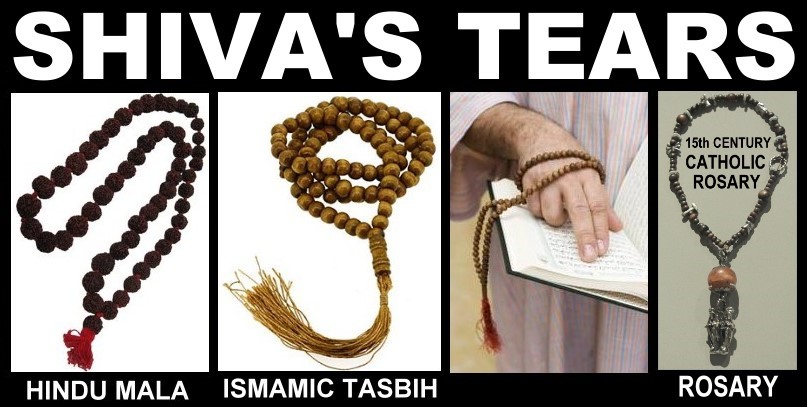
Mat 6:7:
“And when praying, do not keep on babbling like the gentiles.
For they think that they shall be heard
for their many words."
Aseret
ha’Dabarim (Ten Words) condensed from Deut/Debarim 5:
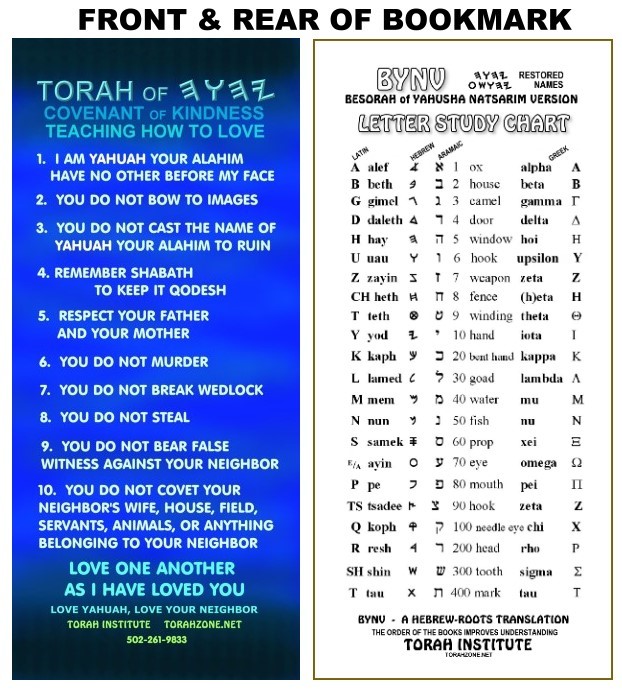
Front & Back of Torah Bookmark/Doorpost Card
ORDER & SHARED AS MANY AS POSSIBLE HERE:
TORAH INSTITUTE
PO BOX 436044
Louisville, KY 40253-6044
phone:
502-261-9833
Google: BYNV
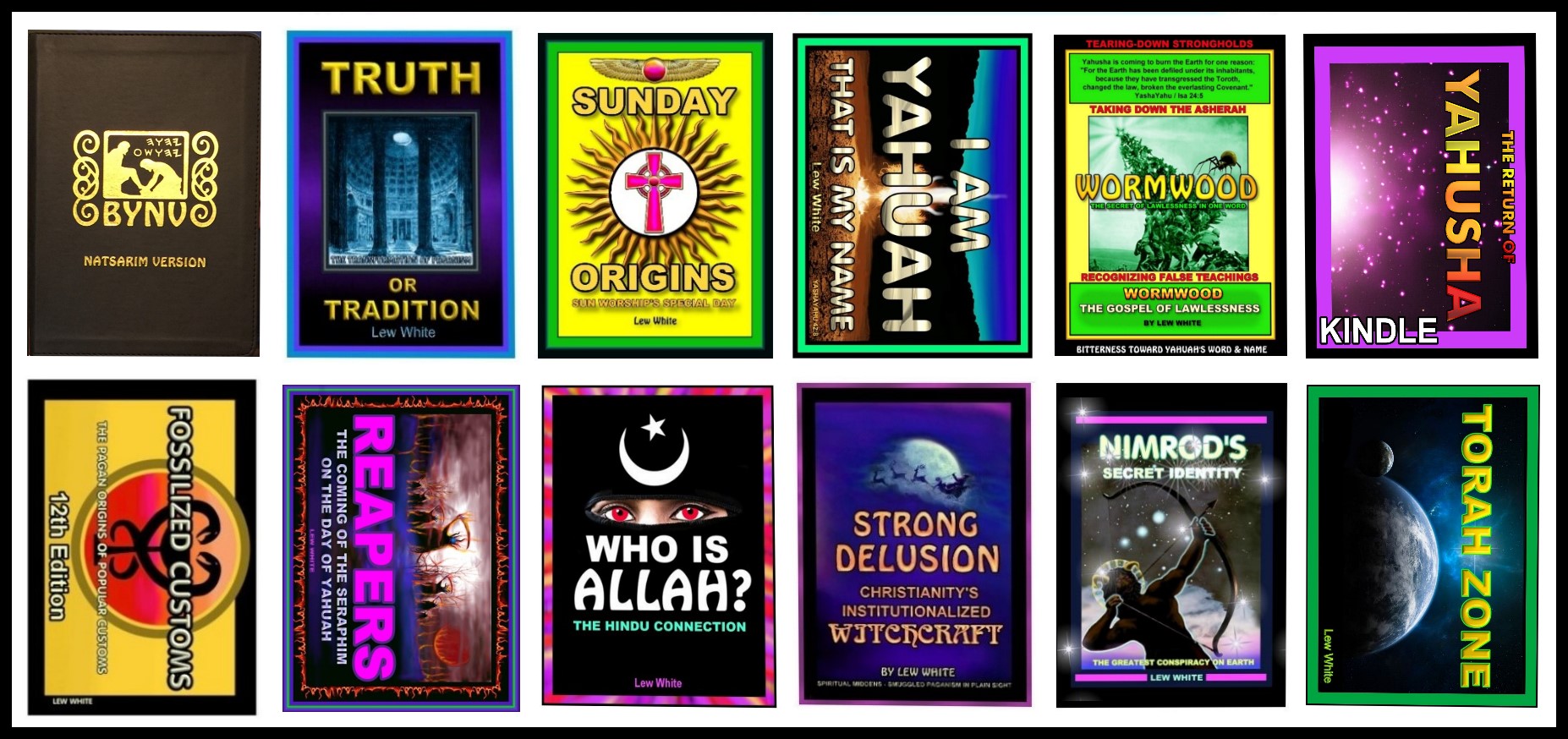
Subscribe to Torah Institute Videos
on Youtube:
